Research: Pictures Big and Small, President's Summer Fellowship Final Reflection, John Young
There is something deeply rewarding about setting up a plan and then executing it. Thought the “heist” metaphor was perhaps a stretch, and though I would never want to implicate myself or my colleagues in “theft” (--though, my brief walk through the British Museum suggested to me that historians, archeologists, and anthropologists have perhaps done their fare share of that, under different names--), finding what I was looking for where I looked for it was a satisfying experience.
What was I looking for? And what did I find? I was looking for the correspondence of Robert Swinhoe relating to Natural History. His “day job” as it were was as a diplomat in the British Foreign Service, and he produced volumes of material related to his work in the consulate. I wasn’t incredibly interested in all of that work, however, and I wasn’t sure what, if anything, I would find in his diplomatic writings with respect to his natural historical work. I did manage to locate all of his archived diplomatic writing. The day after arriving in London I went to the National Archives and spent the morning and afternoon browsing microfilmed catalogues of Foreign Service Office material, looking for things that Swinhoe produced. I spent the whole of Saturday and Sunday at the National Archives—it was the only one open over the weekend.
I had planned to do the archival work here over my first weekend because, although of lesser importance to my overall research interests, it would give me the opportunity to “practice” doing the work of a historical researcher.
Continue reading Research: Pictures Big and Small, President's Summer Fellowship Final Reflection, John Young
Leadership and Aikido in Japan: Rebeca Willis-Conger, Fellowship for Winter International Travel

Yoko Sensei (center, front) surrounded by her dojo
Rebeca Willis-Conger, sophomore sociology major, received a Reed Fellowship for International Travel to study Aikido in Japan.
I love traveling. I always get nervous before leaving, convinced that I am not adequately prepared, anxious about all the accidents that might befall me. Then I leave my comfort zone and rediscover how capable I am. The world becomes someplace exciting and new to explore, while my anxieties appear slightly ridiculous. My trip to Japan was no exception.

Continue reading Leadership and Aikido in Japan: Rebeca Willis-Conger, Fellowship for Winter International Travel
Art and Seoul: Kaori Freda, Winter Fellowship for International Travel
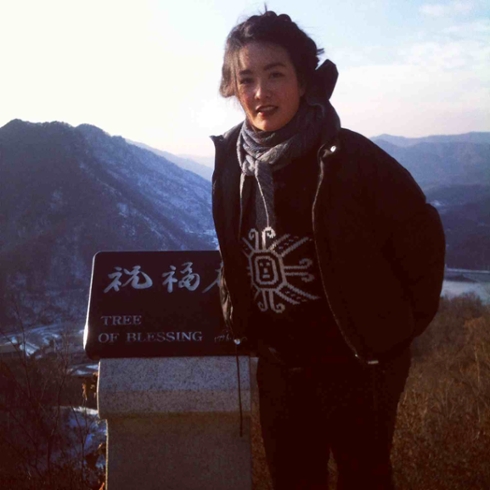
I am a senior art major who had the pleasure of traveling to Seoul during winter 2014 under the auspices of the Presidents Winter International Travel Fellowship. There, I stayed at the Unification Church Cheongpyeong holy grounds for a week taking photographs, making rubbings, and conducting on-site research. I’m intrigued by the ways in which this specific site of pilgrimage manipulates the movements of the body and mind and offers church members a tantalizing promise of eternal spiritual salvation. The Unification Church, also known as the Family Federation for World Peace and Unification, is the church of an international Christian religion. Founded in South Korea in 1954 by Reverend Sun Myung Moon, the church seeks to establish a Kingdom of Heaven on Earth. The church been criticized for its cultish practices, which include mass arranged marriages. The Unification Church directs its churchgoers to Cheongpyeong, located in Seoul. Although I am an avid nonbeliever, Moon arranged my parent’s marriage and I have unwillingly gone to Cheongpyeong multiple times in my childhood. This project sought a departure from my past with the religion by willfully confronting my memories on-site and creating artwork in order to move forward and grow both as a person and an artist.
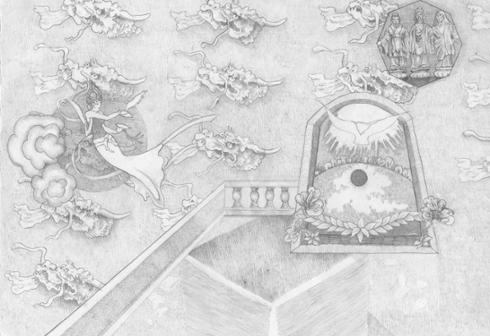
At Cheongpyeong, frigid weather gave hazy form to my breath as I exhaled. Each morning I bundled up before trekking up the Church’s holy mountain, making rubbings along the way. This mountain plays a crucial role as a site of pilgrimage and a harbinger of hope for what the church members conceive as their salvation and pathway to paradise. As they climb the mountain at daybreak during their religious training, the churchgoers pay their respects to holy trees and water imbued with spiritual energy. There is even a place called “Holy Water” where water bubbles and streams from the rocks for church members to quench their thirst as they trek up to the mountain top, not unlike the story of Moses striking the rocks and calling forth water in Numbers 20 in the Bible. Given that the foundation of Unificationism derives from a mishmash of religions including Christianity, I really wouldn’t be surprised if this reference to the Bible stood at the forefront of Moon’s mind as he constructed space and ritual at Cheongpyeong. These religious nodes would blend easily into the surrounding landscape if not for the fact that they are circumcised by a stone ring and marked with stone tablets incised with titles like “Tree of Blessing,” or “Tree of Life” in flowing calligraphic script. Church members believe that their holy ancestors and the spirits of the mountain flutter between the branches of these trees, gazing benevolently down at those who pray with devotion. In addition to these daily pilgrimages, they are confined within a strict itinerary in hopes of purifying their ancestors and exorcising evil spirits from their bodies. Although the strength of their piety is admirable, I’m dubious as to the amount of truth in such claims, especially given that Moon (who dubbed himself the Messiah) and his “Holy” family practiced corruption, domestic violence, amongst other sins. The leaders of the church certainly do not practice the values they preach. This untrustworthiness fractures their constructed divinity and places doubt onto the purity of the religious practices to which their followers adhere.
A Week With Bulleit Group, Reed Winter Externship, Julia Selker

Julia Selker, senior physics major, spent a week working with Bulleit Group, a tech PR firm based in San Francisco as a participant in Reed’s winter externship program.
When I walked into the Bulleit Group’s office in the Marina district of San Francisco, I didn’t even know how to pronounce the name of the company. It’s the same as “bullet,” by the way. I was a small town physicist in a big city tech PR firm and I was ready for some surprises. In just one week I went from wondering whether people who work in public relations are agents of good or evil to ghostwriting two articles (read theme here: CES Roundup: A Date with Power and Huffington Post: 5 Simple Swaps That Slim Down Everyday Cooking) and gleefully doing market research. I was sold, so to speak. I signed up for this externship thinking that I would get a sense for what the tech world was like from the outside, and maybe one day I would be manufacturing microchips for one of their clients. I had not considered that I would leave Bulleit wondering if I could take a few years off before grad school to do PR.
After an hour and a half on public transportation from Berkeley, I dove right in. The bus was too slow to get me there in time for a real introduction, so I went straight into a conference call where about 8 people worked quickly and meticulously through an agenda about the PR plans for one of Bulleit’s biggest clients. Then I started working on a summary of the press coverage that the company had received. I have done my share of research--read literally hundreds of articles from jstor or sciencedirect--but rarely did I consult the news. I discovered a new kind of reading on Google news,TechCrunch, Re/code, and Twitter.
Continue reading A Week With Bulleit Group, Reed Winter Externship, Julia Selker
Groupon, Reed Winter Externship, Richard Adcock

Through Reed’s winter externship program, Richard Adcock, junior linguistics major, worked with Groupon, an online commerce marketplace. This post highlights a few of his impressions:
The conference rooms in the Groupon office are called things like "Touch me, I'm sick" and "Hold all my calls." The open floor plan houses more than one standing desk, and there are more Seahawks jerseys than button-ups. Employees in all departments bounce from teleconference to meeting to teleconference, this being the marketing hub for a rapidly growing, multinational corporation.
A given call might be to go over the week's numbers and prep for an internal meeting, but even this level of bureaucracy and internal review is dispatched in minutes, and employees are back to their own projects. This is a common thread I came to appreciate in my short time at Groupon--analytics are collaborative, ongoing, and maximally quick and responsive.
Continue reading Groupon, Reed Winter Externship, Richard Adcock
You Are Not A Fish: Winter Fellowship For International Travel, Reid Bondurant
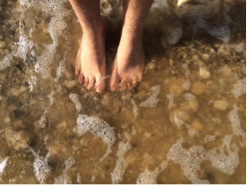
Reed Winter Fellowship for International Travel recipient Reid Bondurant, senior biology major, traveled to Tel Aviv, Israel to explore an awareness-inspiring style of dance known as “Gaga”
Economics in Cape Town: McGill Lawrence Internship Award, Sarah Brauner
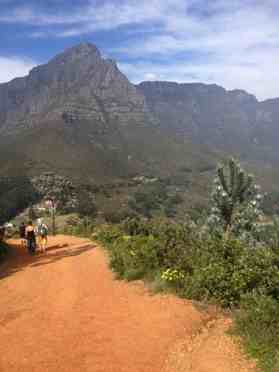
Sarah Brauner, junior economics/mathematics major, received a McGill Lawrence Internship award to spend her summer in Cape Town, South Africa working at the Economic Policy Research Institute.
This summer has been a story of disparate images and experiences, and as I sit down to write this post, its hard not to be daunted by the task of stringing them together into a cohesive narrative. In fact, the more I reflect, the more it seems that the thread holding all that I wish to convey together is a series of sharp contrasts that I have borne witness to, participated in, and attempted—with mixed success—to process.
The backdrop for all this—Cape Town, South Africa—is in some ways one of the most beautiful places I have ever been. Table Mountain, one of the Seven Wonders of the World, is visible from almost every vantage point in the metropolitan area, and beaches (apparently the setting for Shark Week) surround the city. Eucalyptus and palm trees, British-colonial architecture, striking panoramas and even Baboons, abound.
The Birth of a New Life: Davis Project for Peace, Emmanuel Enemchukwu
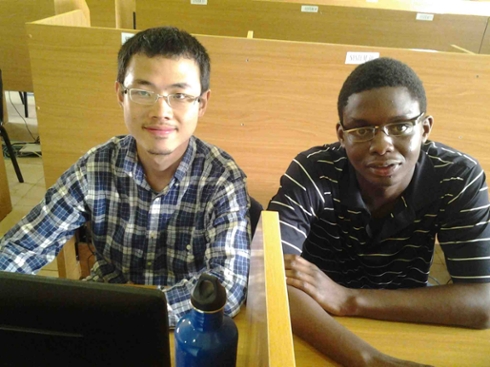
Emmanuel Enemchukwu, junior economics major, was a recipient of the Davis Project for Peace award. The following post contains his experiences implementing his project in Nigeria at the Federal Government Academy.
About half a year now separates me from the time I spent at the Federal Government Academy (FGA) Suleja Nigeria. At FGA Suleja, I executed the Davis project for peace with my colleague, Zhe Li. FGA Suleja, Nigeria, was my alma mater, and its contribution to my moral and intellectual development leaves me forever indebted to it. As such, it was with great zeal that I embarked on the project hoping to contribute the most possible in the small but relevant opportunity that I had been afforded.
The Federal Government Academy Suleja is located in one of the most southern regions of Northern Nigeria. Suleja with its beautiful hills is a town in harmony with itself and its surroundings, but this harmony seems fragile in the face of the current ethno-social turmoil perpetrated by Boko-Haram in North-Eastern Nigeria, a region of close proximity. Once in a while, the scourge of the much-reviled Boko-Haram breaks out of its enclosure in North Eastern Nigeria and into the area of Suleja. But beyond this fear of conflict, we saw peace and prosperity in a school that boasts of some of Nigeria’s smartest young minds. We define peace, with regards to the secondary school students, as the existence of social innovation and an infrastructural platform for students to optimize their academic growth potentials in a violence-free environment.
Tracing Faserland, Fellowship for Winter International Travel, Ben DeYoung
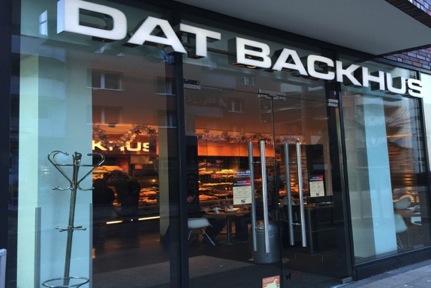
Ben DeYoung is retracing the steps of a trip across Germany as it is presented in the novel "Faserland" by Christian Kracht.
Excerpt from the first stop: Hamburg, Germany.
...I took to the street, unsure of what, exactly, I was looking for. In Hamburg, Faserland had not given me much to work with; he describes the light, but travels the city only at night, and spends most of his time in his friend's apartment. His main characterization of the city, other than his description of the light he does not actually see, comes in the form of what is also not actually there, namely the city that was destroyed. This unseen city, and the reconstruction of Hamburg, would eventually also play a large part in my impression of the place, but I was at least initially struck by a timeless aspect of the city, namely the dialect characteristic of Hamburg, and of its region, Schleswig-Holstein.
Blues Dancing Berlin, Fellowship for Winter International Travel, Serra Shelton
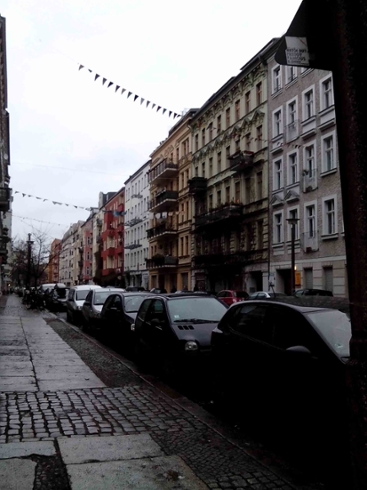
A little background info about my President’s Winter Fellowship project: I am a senior English major at Reed. I have been dancing in some shape or form since I was fourteen, but always solo performance dances: ballet, modern, contemporary, jazz, a little hip-hop here and there. And then, just a year
ago, I discovered social dancing. It has radically changed the way I view my body as a medium for communication. For me there have always been two competing mental states of mind when dancing. The first is performance mode. I conceive of my body as paint on a canvas: it is a fluid motion shape through which I can signify and provoke. The space, locomotion, appearance, and form of my body are visual/kinesthetic sites of meaning. The second state of mind is improvisation mode. This is a selfish mode: when I dance in this body it is almost always when I am by myself, and the movement is for me and me alone. It is an exploration of sensation, a creative play of momentum and shape. I am not concerned with the way my body looks, only with the way it feels as I move. The site of meaning in this type of dancing is not visible: it is an internal reflection on what it means to have a body that occupies space through time. Both of these modes of dancing have been imperative to my formation as a dancer, yet until I found social dancing I believed that these two modes could never intersect. Social dancing, and especially blues dancing, combines these two states of mind. In blues dancing the indulgent focus on sensation, which I thought was only capable solo, is able to be shared with a partner. This creates an incredible pattern of communication that I still struggle to adequately describe in words, and this wa
Insights at Sigenics, Winter Externship, Edgar Perez
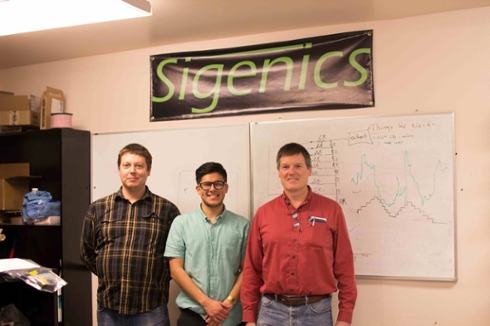
This winter, two fellow Reedies and I had an amazing experience working with Dr. Doulas Kerns and Mr. Marcus Snyder at Sigenics. Together, they provided an empowering three day externship and enlightening insights as to the life of electrical engineers. We started our trip with an hour long commute from the California coast to the base of Mt. San Antonio. Relieved from traffic by the carpool lane and good music, our trip to Sigenics was always pleasurable.
We spent our first day learning about the company and the different roles of scientists and engineers. Dr. Kerns started off with a small tour of their lab and showed us some of their designs. He really blew us away when he showed us the incredibly small size of their circuit designs and their circuit elements. A chip no bigger than 1 squared millimeter can house billions of transistors. As if hearing about this wasn’t enough, Dr. Kerns pulled out a sample of their work and placed it under and a powerful microscope. There is was. Mind-numbing in scale and constructed with jaw-dropping precision. Millions of components carefully embedded in a tiny silicon chip, and the chip: even more precisely designed. Yet here we were, three unexperienced undergrads sharing a room with the chip designers themselves!
The relationship between an engineer and a scientist was the next item on Dr. Kern’s agenda. Using a very Reed-esque analogy of a pizza shop, he demystified some of the quirks of engineering. The relationship between engineers and scientists is actually more symbiotic in nature than one would expect, he explained. Engineers use scientific results to develop tools for scientists. In turn, scientists use the tools to develop new results. This is relationship is a vertical growth pattern where the two fields help propel one another. Along the way, the tools and results produced by both parties will spread horizontally, manifesting themselves as new technologies or constructions for the benefit of our societies. We ended the day with a scientific investigation of the phenomena occurring “behind the scenes” in the electrical components we used the following day, and (appropriately) some delicious pizza from a local shop.
Continue reading Insights at Sigenics, Winter Externship, Edgar Perez
Sigenics Winter Externship, Farhanul Hasan
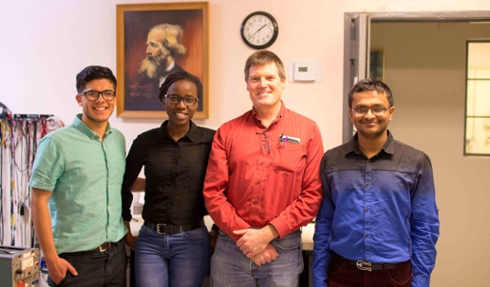
On the 11th of January, 2015, I landed in the Los Angeles international airport for a work experience opportunity that I had been looking forward to ever since my application was accepted. I was picked up by Edgar, who was also doing the externship, and Jackie (Edgar’s sister), whose generosity allowed us accommodations for the duration of the program. Jackie drove us to her house in Costa Mesa and Modi, another of the externs, came in later in the evening. We went out to grab dinner and buy groceries for the next few days.
Day 1: Jan 12
We woke up at around 6:30 and hit the road at 8:15. The traffic wasn’t nearly as bad as we expected and as a result, we reached Sierra Madre by 9:15. At the Halcyon building (which housed the Sigenics Lab), we were greeted by our sponsor, Dr. Douglas Kerns. We went inside the Sigenics lab and met Marcus Snyder, the office manager and senior technician. Douglas gave us a brief overview of the company and its goals. We learned that Sigenics specializes in designing integrated circuits (IC) and silicon wafers among their microelectronic components. Douglas also explained the science behind electronics and electric circuits. After learning these introductory ideas, we looked at a silicon wafer chip through an electron microscope, which was very exciting as we could actually see the arrangement of electrons that serve as the building blocks for all of electronics.
Continue reading Sigenics Winter Externship, Farhanul Hasan
An Unforgettable City: Winter Externship at Mary Howard Studio, Hannah Muellerleile

I wanted to extern with the Mary Howard Studio because as it is a set design studio, I figured I’d see my interests in graphic design, art and photography brought together in a hands-on, real-world way. And indeed I did. All three are expertly and creatively combined to make the magic and beauty one sees in magazines.
But wait, you may be wondering, what exactly is set design? The simplest way I can explain it is this: Mary Howard Studio is a set design studio that works in the fashion industry. So, in every glossy-paged fashion magazine there is the model in beautiful clothes looking effortlessly perfect, right? But there’s also the world behind that model. Mary Howard
Studio makes, designs and places every detail in the set behind that person.
Continue reading An Unforgettable City: Winter Externship at Mary Howard Studio, Hannah Muellerleile
Corey McPherson Nash, Robert Haas, Winter Externship

I just finished my externship at Corey McPherson Nash in Massachusetts, and had a great time. Their office is beautiful, which makes sense. Who would trust a branding and design agency with a boring office building? Even though I had no comparable skills, they were great hosts and included me in all the big business. I can't go into specifics, because "loose lips sink ships", but I got to participate in client meetings, conference calls, brainstorming sessions, and even throw my two cents in on a few design questions about websites and magazine spreads. All the work Corey McPherson Nash does is very impressive, but the most striking thing to me was how much everyone I interacted with enjoyed his or her job. Even if I'm unable to get into branding and design when I grow up, I could only hope to get half as much job satisfaction as them. I also appreciate having something to look at after the end of a day's work. Sometimes hard work will not produce anything substantive, and at that point I'd probably consider it unnecessary toil rather than useful work. Overall, my externship was a great experience and I would certainly do it again. I learned a lot.
Continue reading Corey McPherson Nash, Robert Haas, Winter Externship
Winter Externship with New Mexico Legal Aid
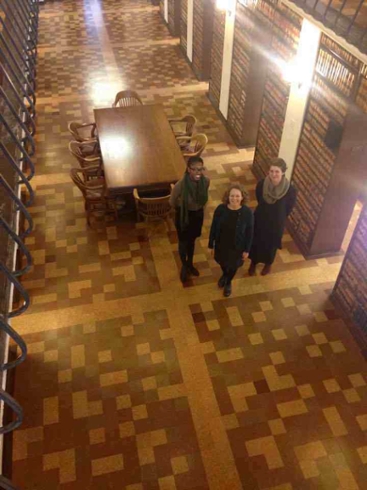
This January, I had the opportunity to spend a few days at New Mexico Legal Aid in Santa Fe. Hosted by alumna Amy Propps ’91, my time at NMLA was probably a bit of a crash-course in the legal aid world. My five days with New Mexico Legal Aid can be best described as a game of question and answer. New Mexico Legal Aid is a statewide public interest legal aid firm that provides free legal services for low-income people and communities throughout the state. Through their various branches located in various cities, they specialize in various types of civil law ranging from family law to property and housing to employment to everything else in between. Just from my short time there, I was able to gain a first hand look into the vast world of legal aid and into the mechanics of exactly what it is that attorneys actually get to do.
When I arrived in Santa Fe, I really had no idea what to expect—either from New Mexico itself or from my time at NMLA. My first time in New Mexico, I admittedly did not know very much about the state’s rich history (nor did I really understand how cold it gets during the winter months). I did, however, know a fair bit about law and the world of public interest law practice. What I didn’t fully know was exactly how diverse, complex, and complicated public interest law could be. Of course, when I got on the plane from Baltimore to Santa Fe, I had had a few hopes and expectations for my externship experience. Having had the longtime goal of attending law school and eventually going on to practice public interest law, the main thing that I wanted to gain from my time at NMLA was a comprehensive look into exactly what the world of public interest law looks like, what sorts of work I could potentially expect to do as an attorney later on, and what sorts of steps I could take to prepare for a life in this field.
When I first arrived in Santa Fe (about two hours later than I had originally planned due to one horrible windstorm over the Midwest and one delayed flight coming from Dallas), Amy and my host, Callie Dendrinos, were waiting for me at the tiny airport. From the get-go Amy and Callie were showing me around and filling me in on New Mexican history and culture.
Continue reading Winter Externship with New Mexico Legal Aid
The Smiles of the Children: Marshal Academy Internship in Pakistan, McGill Lawrence Internship Award, Ahyan Panjwani
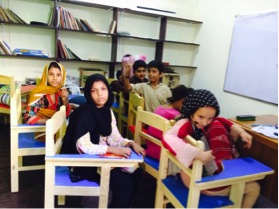
During the scorching summer of 2014, I worked with Mashal Academy, an alternate school for underprivileged children in Neelum Colony, a squatter settlement in Karachi, Pakistan. The initiative is primarily run by high school students from The Lyceum; they spend afternoons and early evenings with primary school level children from the area helping them with Math, English, Urdu (the national language) and basic sciences which are part of the Department of Education endorsed curriculum. Mashal was based in a single room, rented by the high school students where they used to help around 15 children with these subjects.
However, because of the superior quality and consistency of education that the students offered, there was a surge in the number of children wanting to attend Mashal. In light of this, I worked with the students to lease a new space which is much bigger and accommodates 34 children and the activities that the mentors plan for them. The new place has two rooms and a huge veranda allowing the students to be divided into two groups depending on their prior academic learning. Over the summer, we also created lesson plans for new subjects including Music, Arts, Drama and Physical Education while also allotting an hour every week for reading time. Given the pedagogical methods in the schools usually available to the children, these new additions are phenomenal – almost unheard of. We also laid ground for two other programs at Mashal: monthly medical check-ups for the children by a qualified pediatrician and a daily lunch program. Both of these are aimed at incentivizing parents to send their children to school while also providing quality services in area where infrastructure for health and hygiene is almost negligible.
Most importantly, we put in place a sustainable donor model for Mashal over the summer. Since the school was housed in smaller premises earlier, the rent was not a very big issue. However, the new house and the expanded services being offered mean that the operating costs have risen substantially. I guided the students towards finding and approaching donors who would pledge to chip in with the costs on a monthly basis for an entire year before renewing their commitments.
Continue reading The Smiles of the Children: Marshal Academy Internship in Pakistan, McGill Lawrence Internship Award, Ahyan Panjwani
Peruvian Rainforest Conservation Project: Jaclyn Calkins, Winter Fellowship for International Travel

Working on a conservation project for two weeks at Chontachaka Lodge in Manu Ecological Reserve, Peru, has been one of the most rewarding experiences of my life. Time flew as I spent my days surrounded by a dense, green, and immensely beautiful Amazon jungle environment. I got my hands dirty helping to save it for future generations. Volunteers ate a completely vegetarian diet, since the space required for meat farming has widespread and devastating impacts on forests. We also used only biodegradable supplies, including clay-and-pasta-based toothpaste and lemon oil bug repellant (which didn't do much to prevent me from getting back to Cusco covered in insect bites from head to toe, but DEET-based bug repellants are terrible for the ecosystem!) The idea, in addition to being out there helping with conservation, was to leave as little of a footprint as possible - and I was able to do just that.
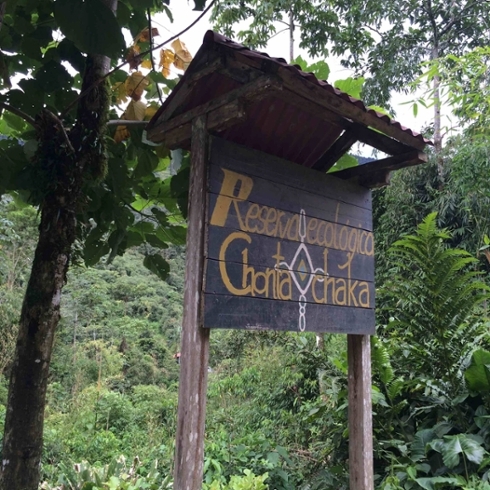
My tasks in this project included planting species vital to the region (such as the leche-leche plant, called such because of its white sap, which attracts an uncommon species of green butterfly), using a machete to remove invasive species (like bamboo) that threaten the growth of native plants, and monitoring wildlife such as Peru's native bird: el gallito de las rocas, or cock of the rocks, and a number of frog species impacted by climate change. In my free time, I had the opportunity to hike the reserve’s many trails, walk to tiny local jungle villages to practice my Spanish, journal about my experiences and the history I learned in Cusco to inspire future fiction writing, visit an animal sanctuary, and swim in nearby waterfalls! Only in Manu can a variety of animals such as wild monkeys, jaguars, giant anteaters, giant otters, and caimans still live without fear of hunting or other human influences, and a majority of insects there have not been studied by science at all. Most of the reserve (which is the size of New Hampshire) is accessible only to licensed biologists, so it was a blessing to be able to work in part of it as a student. I hope to return to Manu in the future to explore even more of the area as a field biologist. This was an amazing and eye-opening way to spend my Winter Break, and I'm very thankful to Reed for making this opportunity possible.
Continue reading Peruvian Rainforest Conservation Project: Jaclyn Calkins, Winter Fellowship for International Travel
Fall Externship with simon max hill '01
I learned in early September that simon max hill ‘01 was sponsoring an externship over fall break. After reading his interview on Works & Days, I knew I wanted to apply. I had just switched my major from biology to English, and I felt that I connected with simon on several levels with regards to his experience at Reed. I was very interested in his work in film and advertisement casting, and as someone interested in media and advertising, this felt like a logical next step.
Nine days later, I found myself lying in bed and checking my email before French class, when my sleepy eyes read the subject line, “Dan, meet simon, your fall externship sponsor. simon, Dan Pogust!” I was so incredibly thrilled for the learning opportunity ahead of me, that I accidentally made noises of excitement that startled my roommate.
I began my externship early, on Saturday October 18th, with Liz Vice, a freelance casting director who was helping simon cast extras for the movie Green Room. This process began by working five and a half hours contacting roughly one hundred extras via email, text, and repetitive phone calls. The whole process was an excellent lesson for me in casting extras, and an excellent introduction to the externship as a whole.
Continue reading Fall Externship with simon max hill '01
PSF Project, Campus Within Walls, Part 3
I went to where we are supposed to find society’s worst. What I found were people working to be their best.
I spent five weeks attending class with our outcasts, our pariahs, our unseen. The ones we place in shadow and in darkness, out of view, all the better to construct them as distant abstracts, faceless and certainly heartless causers of violence and tragedy and badness. Criminals. Violators. Undeserving of society, deservedly stripped of rights.
Monsters.
Continue reading PSF Project, Campus Within Walls, Part 3
Interview with Jessica L. Benjamin
Nathan Martin '16, Assistant Editor at Works & Days, interviewed Jessica L. Benjamin '93, Senior Account Manager at Monster Worldwide.
How would you describe your career path? Do you feel it's been fairly straightforward, or more winding?
It's been fairly straightforward in that when I was entering college, I wanted to be a journalist, or a writer, then I found out how much journalists made, and that there was another career path for me. I was a Quest editor, which is how I got almost all the experience I used to get my first couple of jobs, and then I've worked in media, one type or another pretty much the entire time. Even when I was in law school, it was part-time, and I was working in media part-time to make money, and so it seems fairly straightforward. What's happened along the way is that newsprint is not a way for someone like me to make money anymore and so I made the switch over to doing digital media. Then I discovered recruitment advertising online, which is one of the areas where there is money to be made. So I was doing it before in the sciences, and then when the NIH cuts came, and there was much less funding in the sciences, then I went to go work for Monster.
Continue reading Interview with Jessica L. Benjamin
